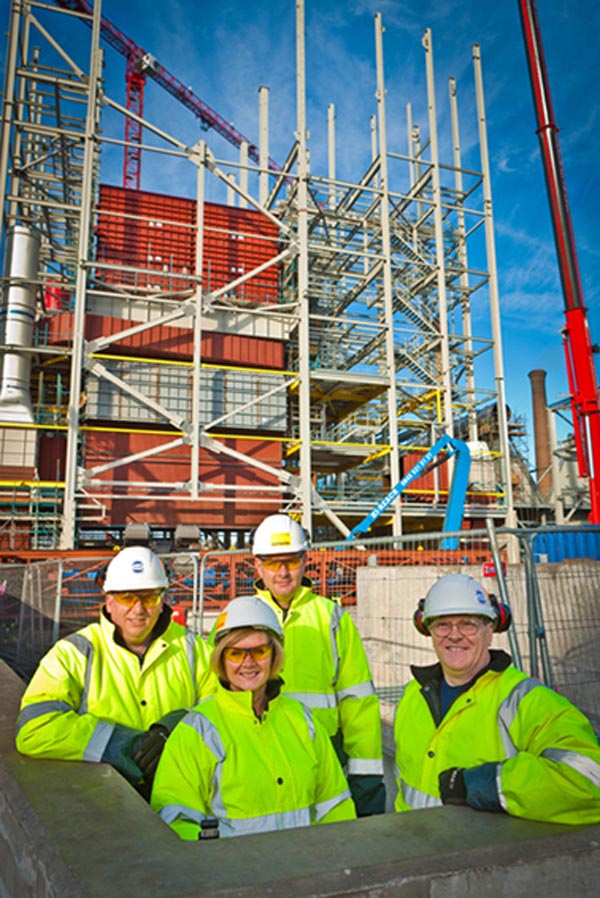Tullis Russell Closing One Month after Mill’s New Biomass Plant Opens
![]() Print this Article | Send to Colleague
Print this Article | Send to Colleague
According to a recent report by BBC News, London, U.K, as a very large user of energy, Scottish paper mills, 55 years ago, consumed 800,000 metric tpy of coal, so the Tullis Russell paper mill in Markinch was happily located at the heart of the Fife coalfield.
Pulp and paper remains the world's fifth largest industry when measuring carbon emissions. Though mills have modernized pollution controls dramatically in the last few decades, so much that U.K. residents don’t smell the distinct odor of production, even nearby, the papermaking process still remains very resource and energy intensive. Thus, the new Tullis Russell biomass plant, built for £200 million next to the modern-day Tullis Russell plant, has come too late to make any difference in the mill’s fate, which is now in administration.
In a joint project with RWE Npower, the Tullis Russell biomass plant swallowed £8 million of Scottish government grants, began work last year, and was officially opened last month.
Now the biomass may keep burning, as it feeds into the national grid. But as April closed, 325 staff at Tullis Russell were made redundant, with a further 149 are staying on to complete contracts.
The mill simply couldn't withstand the various pressures bearing down on it; the increased price of wood pulp, a major customer going bust, export earnings hurt by the weakened euro against the pound, and an industry in decline across Europe. Enduring recent years of high energy costs using conventional power contracts had undoubtedly put increased financial stress on the mill in an already stressful market to make paper.
According to the BBC, the nation is using dramatically less of the high quality document and brochure-quality paper and card in which Tullis Russell specialized. Online publishing and the economic downturn have removed 40% of value from this segment of the market. In the past seven years, its volumes were down 14%. Email and electronic documentation and billing reduced demand for paper. And the U.K. is also using less newsprint—down 7% across Europe last year.
If mills make tissue or cardboard, as with the Macfarlane Group in Glasgow, they can still have a healthy business in Britain. But graphic papermaking, as in Markinch with Tullis Russell, is losing out to structural changes in the market, and cheaper competition. The BRIC countries of Brazil, Russia, India, and China have undercut European papermakers. Cutting down on energy costs is a wise strategy to remain competitive, especially if a producer with a historic legacy such as Tullis Russell wanted to produce and market what it can advertise as superior products on the international playing field.
But this was clearly a case of "too little, too late". Since going into administration, a handful of the 72 previous corporations approached to take over the mill have showed serious interest in possibly resuming papermaking operations of some kind due to various advantages of buying after insolvency is filed (see article above).
Administrators have, at least for the time being, decided to see if any of these buyers could make a commitment before the remaining "clock" on a still operational (though winding down) mill runs out.
Based on previous patterns of similar closings, it is more likely that due to the loss of a trained workforce and paper machines that cannot easily be rebuilt to produce more profitable pulp products, Tullis Russell will be sold in pieces.
It is likely that this brand new biomass asset could be one of the first to go should an operator not be found very soon for the mill’s remaining 149 workers winding down orders and shuttering equipment, a process that is now accelerating. Npower is already reportedly looking for an acceptable partner to help guide the venture past this fast and disappointing closure.
The £200 million investment, one which might have helped Tullis Russell weather an otherwise tough market by providing significantly cheaper energy had it been built at the beginning of the decade instead of one month before closure in 2015, will likely be sold for a fraction of the cost it took to build. It will probably be sold to an operator who will divert 100% of the station’s output to the U.K. electric grid, foregoing powering a large industry on site as was originally planned.
In the picture below, seemingly optimistic times for the project are shockingly recent considering the end of April's abrupt closure-status of Tullis Russell as it entered administration. Proud workers ready to supply power to Tullis Russell designed for primarily on-site papermaking stand in front of the clean, state of the art facility that had just been completed.



